Training 2024: confronting the horror of modernizing content
At the Training 2024 conference, we confronted the horror of modernizing content—and offered real-world advice to make the process less scary.
The horror of modernizing content
In this session, Janet Zarecor and Alan Pringle talked about the challenges organizations face when they start looking for more efficient and scalable ways to create, manage, and distribute their learning and training content. They also shared key considerations you need to look for before selecting content management tools.
This talk was not designed to give guidance on a specific tool. Instead, the goal was to help attendees take a step back to look at the big picture of solving their pain points in their content operations.
Why are we here today? Why are you here today? Janet and I are going to show off our evil queen crown and our Dracula cape and have some fun talking about the things that you need to think about before you even start picking tools to improve your content operations. We are not going to tell you what tools to pick. It is not a one-size-fits-all situation with tools for content operations. Every organization’s requirements are going to be different. Those requirements are what should be driving your tool selection, not because you heard it in that conference.
– Alan Pringle
Common pain points in content operations
Attendees provided several examples of current pain points their content operations.
- A process change being driven elsewhere is having an impact on the way they create content
- Managing content that has no owner
- Challenges with collaboration and centralization
- Change management difficulties
- Redundancy
Many had also experienced the obstacles of manually updating files with new logos, content, and so on after their organization changed branding or other content.
Janet and Alan shared these core considerations your team should think about before you move forward with modernizing your content processes.
- Executive support, visibility, and communication
- Discovery and requirements gathering
- Lifecycle, governance, and standardization
- Delivery outputs for now, the future, and beyond
They also included a checklist of what you need before you start selecting content management tools. Download the presentation slide deck from our conference resources page to get the checklist, along with an in-depth review on the core considerations above.
Consider a content therapist
Years ago, we had a client refer to us [content strategy consultants] as content therapists. There are a lot of parallels there, because when we come in, we get to talk to you, and you get to offload all of your complaints onto us. We take that on board, discuss it with you, and figure out some ways to improve things. Then, hopefully magic will happen.
– Alan Pringle
I also want to say think of them as a marriage counselor, too. They’re that outside voice that can say, “Now I realize this is uncomfortable, but you’re shooting yourself in the foot. You’re doing too much work, no-bang-for-your-buck,” kind of thing.
– Janet Zarecor
What a consultant brings to the table is we’ve heard your pain points before. We have ideas with processes and tools that can address them. You have knowledge about your domain. You know about where the bodies are buried with your process. You know your tools and technologies better than we would. For example, Janet and her team know their electronic medical records software like the backs of their hands. Do you know how much I know about that? I saw it on a screen in my father’s hospital room. That is my full experience with Epic medical records. I don’t know anything about it. But by pulling these two groups of knowledge together, you essentially create magic. We rely on you for your domain expertise, and we give you a third-party point of view.
– Alan Pringle
Some organizations are wary of bringing outside consultants in, and a content strategy consultant doesn’t have to be your solution.
I realize it is not in every company’s DNA to hire a consultant; some just don’t want to. If you’re going to move forward with initiative like this and you have some money in your budget to hire, consider hiring somebody with more of a content focus that will look at your project through that lens. They can always pick up whatever domain knowledge they need from you. That can be a way to get that third party perspective without hiring a consultant.
– Alan Pringle
Other considerations for these projects
It’s very common on a content operations modernization project for there to be a primary content type that is driving the initiative. Therefore, as you move into planning, as you move into implementation, of course that particular type of content is going to have most of your focus, most of your attention. But it’s important not to let that focus become tunnel vision where you’re not seeing anything else. There are probably other content types that you need to be sure you’re accounting for in your planning. Go back to your content audit, look at the list of content that you came up with and be sure that you’re accounting for that content.
– Alan Pringle
What I really want to drive home here is don’t box yourself in. Be sure to ask tool vendors very hard specific questions about how adaptable their tools are, especially on the delivery side, because it gives you more freedom down the road and it means you’re making a better investment. If you yourself are not comfortable asking those tough questions, have your consultant or your content person do it. If you don’t have either of those things, I’m pretty sure your procurement people and your IT department in particular will be delighted to ask. Again, it takes a village here; rely on other groups that you may not think are primary content people, because they could be a huge asset to you.
– Alan Pringle
Expo hall
Our team had a booth in the expo hall, and attendees were eager to talk to vendors! We’re so glad that so many people enjoyed the spooky monsters on our pop-ups and table.
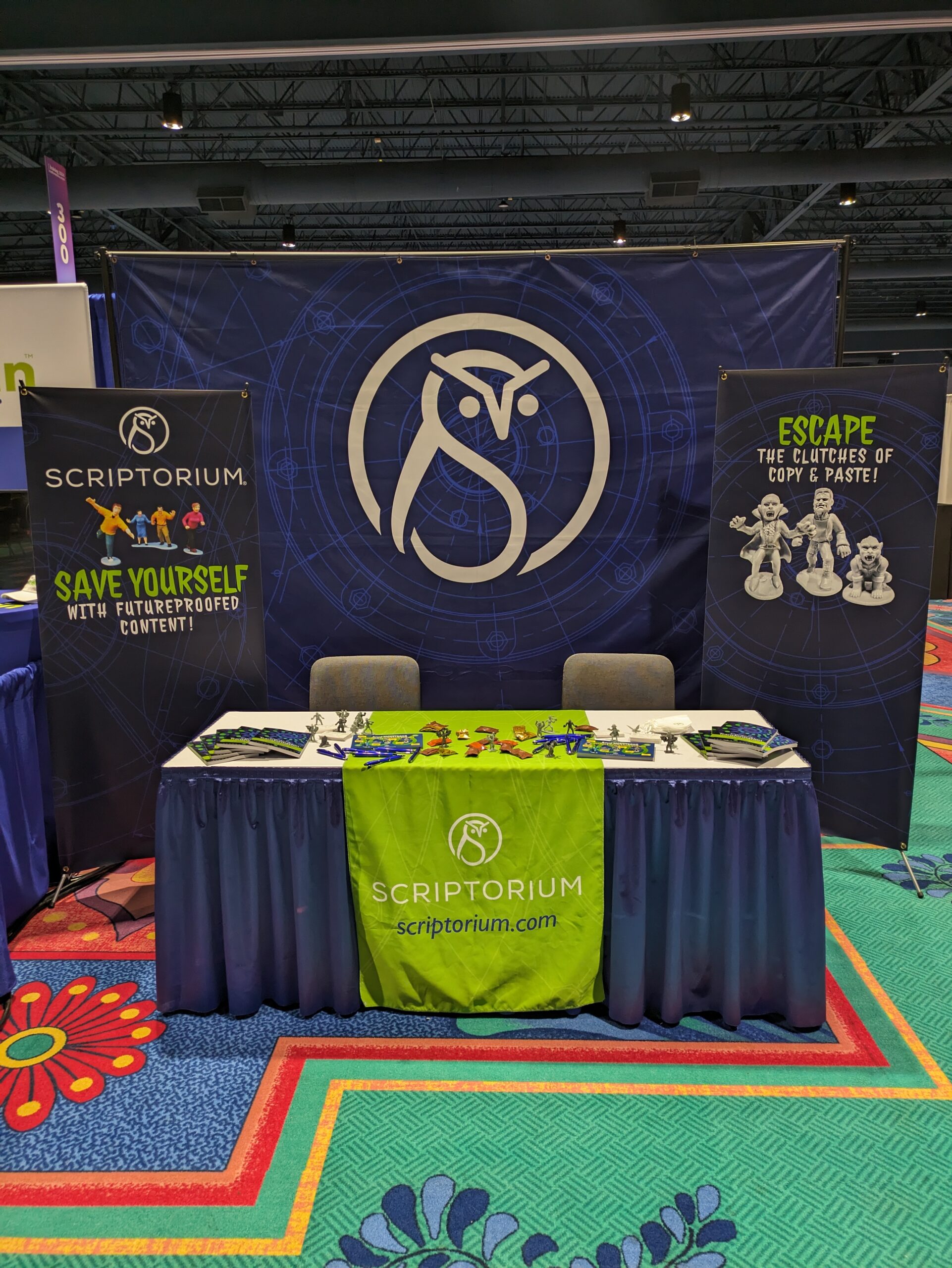
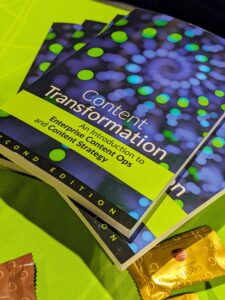
Eliminating the pain of copying & pasting content between platforms was something that really resonated with people. Some thought it sounded like an impossible fantasy. Our team explained, “It’s possible to have a single source of truth for your content so that you can author or edit your content once, then push that content to anywhere it needs to go. No more copy and paste.”
And that’s a wrap! We want to say a huge thank you to Steven T. Dahlberg and his team at Training Magazine for organizing this incredible event.


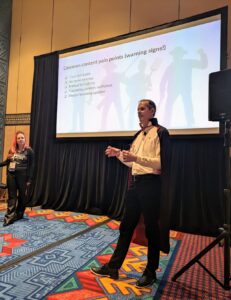
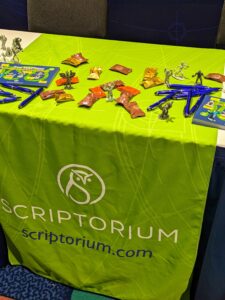

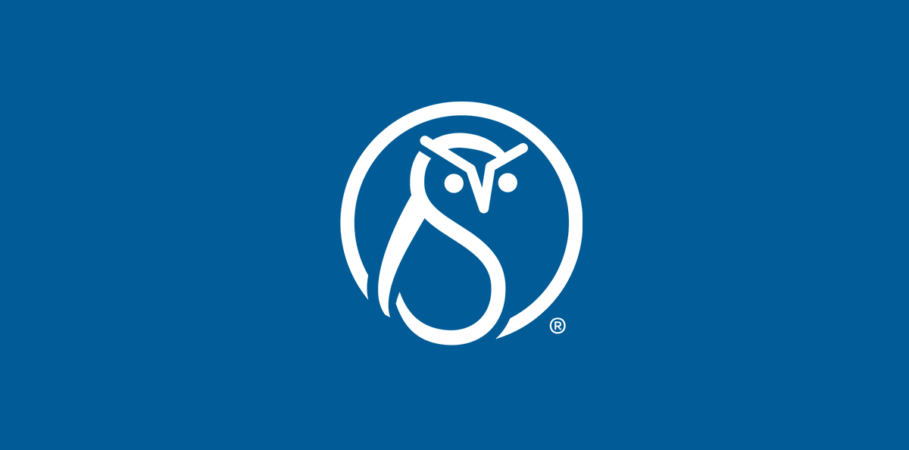


Marianne Calilhanna
Thanks for sharing your thoughts on this event! I love the counselor/therapist analogy. I truly don’t see how an organization can evolve content management WITHOUT a consultant (penny wise/pound foolish).
Great cape, too!
Alan Pringle
A session attendee saw Christine helping me put the cape on before the session and said: “I guess I know who is speaking at this session.” YES, YOU DO!